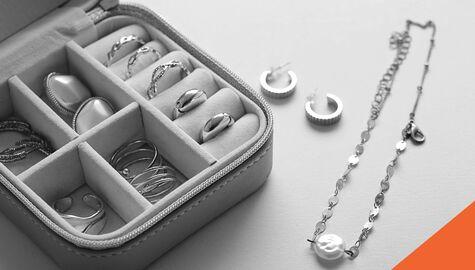How to Get Rid of Mold
Thursday, 9 July 2020
It looks gross, it smells gross and it can cause a whole lot of health problems for you and your family. It’s mold. It’s a headache to discover mold as a homeowner because it can be costly to remove and you are now aware of potential health problems it may cause. Luckily, if you find mold in its early stages, it can easily be removed with household cleaners. In this blog we will provide a simple a step-by-step guide of how to get rid of mold in your home. At BIG, we know that by learning how to get rid of mold safely and effectively, you will be able to protect your family’s health and the value of your home.
Are You Sure It’s Mold?
Molds are a common form of fungi that grow when moisture and oxygen are available in its environment. They reproduce by forming spores, which are tiny microscopic cells that resist drying and are released into the air. When spores land on damp surfaces, they grow to release chemicals that will digest and destroy the surface and materials on which they lay.
A common type of mold found in the home is mildew. It grows in dark, damp places. Initially it will look like grey or white powder, but the accumulation of mildew will appear brown or black like soil if not removed promptly. To confirm whether you’re dealing with mildew or dirt, take a cotton swab dipped in household chlorine bleach and dab the surface of the suspected mildew. If the stain lightens or disappears after two to three minutes, it’s mildew. If the spot does not change, it’s likely just dirt.
There are other more dangerous strains of mold that might also be in your home. A musty, earthy odor is a tell-tale sign of a high concentration of mold. A black or green mold that is fuzzy or slimy if found on your home drywall or wood may cause rot. If these materials are soft or crumble to the touch because of the mold, it will have to be removed immediately in its entirety.
Be Prepared
Mold removal takes patience, the right equipment and proper disposal. If the affected area is greater than 10 square feet, consider hiring a professional as it requires heavy-duty chemicals and the proper disposal of materials. Contact your local public health department for mold testing and expert mold removers in your area.
Depending on where the mold is located, you might need these tools:
|
|
|
You may also need these materials:
|
|
|
Step 1 How to Get Rid of Mold: Eliminate the Cause
The first step of how to get rid of mold in your home begins with locating and removing the source of moisture in the affected area. Any leaks or condensation that persists will continue to be a breeding ground for mold if those issues are left unresolved.
Step 2 How to Get Rid of Mold: Seal Off the Affected Area
Once the cause of the moisture has been dealt with, prepare the space for mold removal. Start by sealing the doorways and other openings that would be accessible from other areas in your home by placing heavy plastic over each opening. Seal the plastic sheets in place with tape to reduce any airflow of spores. With outdoor openings, place an exhaust fan to help remove mold spores from the room. Turn off your AC or heating and seal off any air vents as well.
Step 3 How to Get Rid of Mold: Protect Yourself
Wear a respirator or a facemask rated for mold spore protection when you get rid of mold. Keep your arms, legs and hands covered to avoid contact with mold spores. Wear old clothes that can be thrown away after use. Start with soap and a sponge to remove visible mold. You can also add bleach, but it is not necessary. If the moldy spot is dry, reduce the chances of airborne mold spores by spraying the area lightly with water.
Step 4 How to Get Rid of Mold: Remove Mold
Consider the material where the mold is located. When you get rid of mold on a non-porous surfaces such as a window sill or tile, some detergent or soap mixed with water should be enough to eliminate the mold. Bleach may be added for greater effectiveness but is not necessary. Make sure the bleach won’t discolour the material or surface before using it.
If the mold is found on a porous surface, hydrogen peroxide penetrates more effectively than bleach. You may also consider using commercial mold removal products, which can be found in most hardware or home repair stores. For porous surfaces that have been wet for more than 48 hours, you may have to remove the material altogether.
DRY ALL AREAS THOROUGHLY to stop the regrowth of mold in the affected area. Once the moisture has been dried up, clean and spray/seal the area with an antimicrobial treatment to prevent mold from coming back.
Step 5 How to Get Rid of Mold: Clean Up
Once you’ve effectively removed the mold and thoroughly dried and cleaned the area, place all sponges, equipment, clothing and other materials used in cleaning in a heavy-duty garbage bag. If at all possible, take the garbage bag through the nearest exit to avoid going through the rest of the house and potentially spreading spores.
Sometimes the musty smell of mold will linger after cleaning. If the smell persists, an all-natural cleaning method can save you money in the process of how to get rid of mold. Try placing bowls of vinegar, lemon water, or saltwater around the room until the smell is gone. It may take a couple of days for the smell to be eliminated by this method.
Water damage, fires, floods and storm damage can all be causes of mold. Make sure your home is properly insured in these events. If you’d like to learn more about BIG’s competitive coverage and prices, contact us today to get a no-obligation quote for your home.



